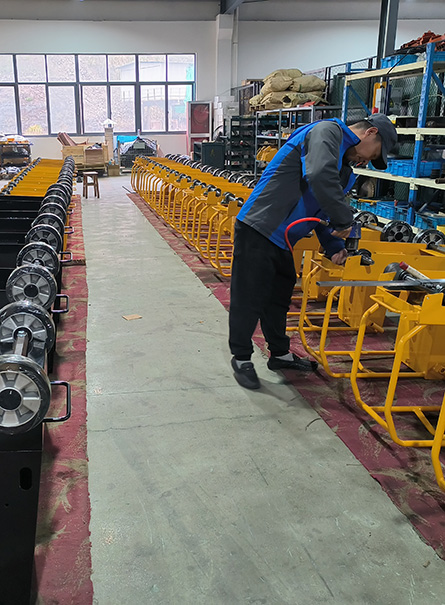How to choose the best plate compactor for pavers?
When we choose a vibratory plate compactor, we should consider some factors.
First, we determine the size and power of the vibratory plate compactor required, depending on the area of the road surface planned for compaction and the degree of compaction that needs to be achieved.
Second, we should determine the type of vibratory plate compactor we need, which is mainly divided into two types, reversible plate compactor and irreversible plate compactor , reversible plate compactor is more suitable for applications with a larger range of compaction.
Finally, we need to consider the function of the vibratory plate compactor we need. Vibratory plate compactors can come with different handles of different materials, different vibration Settings, etc. We need to consider the functions we need to determine the kind of vibratory plate compactor.
What is a plate compactor used for?
A vibratory plate compactor is used to compact materials such as soil, gravel, concrete, and asphalt. It is commonly used to compact the surface of a building preparation.
How does a plate compactor work?
A vibratory plate compactor works by vibrating a flat metal plate at the bottom to compress and shatter the material, reducing excess air inside the soil.
How deep does a plate compactor compact?
A vibratory plate compactor usually compacts to a depth of 8 to 12 inches, but the actual surface moisture content, soil type, and type of vibratory plate compactor will affect the compaction depth.
How much does a plate compactor weight?
The weight of a vibratory plate compactor can vary depending on the size and model, but they typically range between 100 and 200 pounds (45 to 90 kg).
Plate compactor vs jumping jack
A vibratory plate compactor is a machine that compacts soil and other materials by means of heavy vibrating plates. A jumping jack compactor is a similar machine except for using a piston-driven system to provide greater vibration. Compared with the vibratory plate compactor, usually jumping jack compactor is suitable for more dense compaction operations, and the price will be relatively higher.
Plate compactor vs roller
The plate compactor is a hand-held vibrating compaction tool. A roller, on the other hand, is a heavy machine with a roller on the bottom that can be used to crush crushed stone and granulated materials. It can be operated by hand or with an electric motor.
Large plate compactor vs mini plate compactor
It is very intuitive that large plate compactor is much larger than small plate tamper in appearance. Large plate compactors are more suitable for large outdoor construction projects and produce more energy. In contrast, a small plate compactor is more suitable for small indoor work and can be used flexibly, but produces less vibration force.
Plate compactor parts/Plate compactor attachment
Engine
This is the power source of the compactor, typically a gasoline or diesel engine.
Compaction Drum
This is the main plate compactor parts, which is responsible for the compaction of the soil. It consists of a rotating drum, typically made of steel, which is usually lined with rubber or plastic.
Vibration Control
This is a switch or lever that controls the amount of vibration created by the compactor. This controls the amount of energy used during the compaction process.
Plate compactor pulley
Plate compactor pulley is one of the plate compactor parts that allow it to be moved from one place to another.
Plate compactor rubber pad
Plate compactor rubber pad is placed between the plate compactor and the compacted road surface. Its main function is to reduce noise and protect the machine from damage. Sometimes we should prepare plate compactor pad alternative.
Plate compactor oil type/Plate compactor exciter oil type
The type of oil used in a plate compactor depends on the make and model of the machine. Most plate compactors require SAE 30 non-detergent oil, although some require synthetic or multi-grade oil. Check the owner's manual for specific oil type recommendations.


